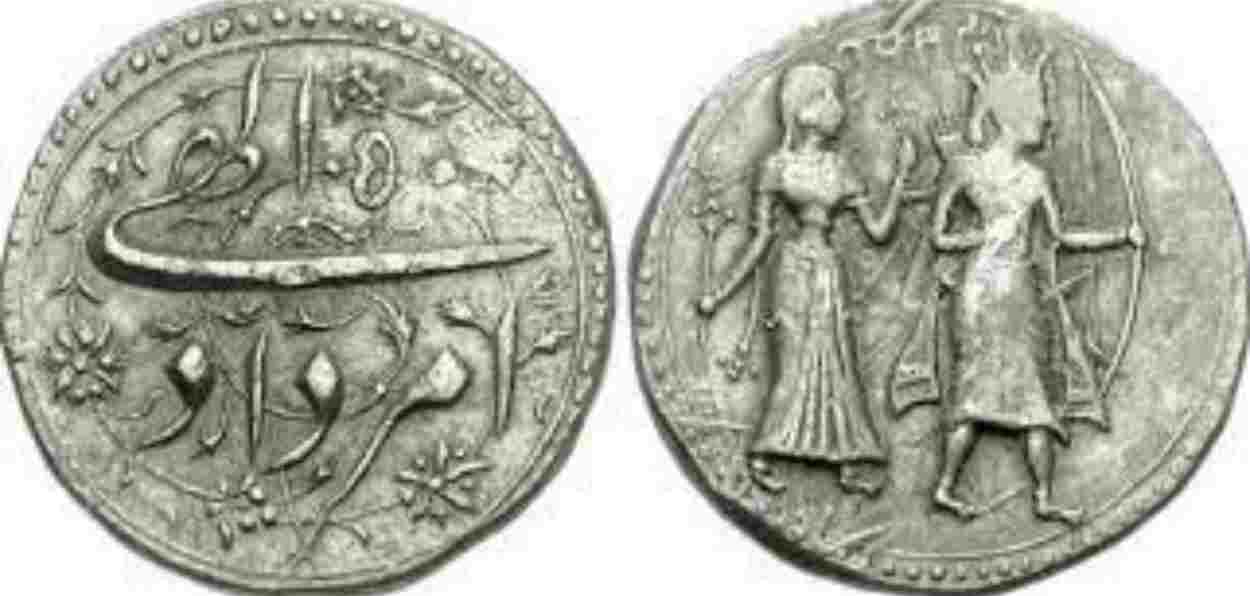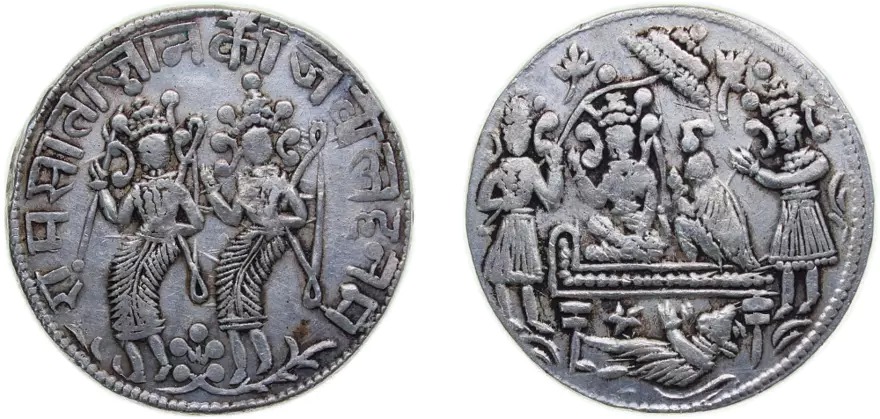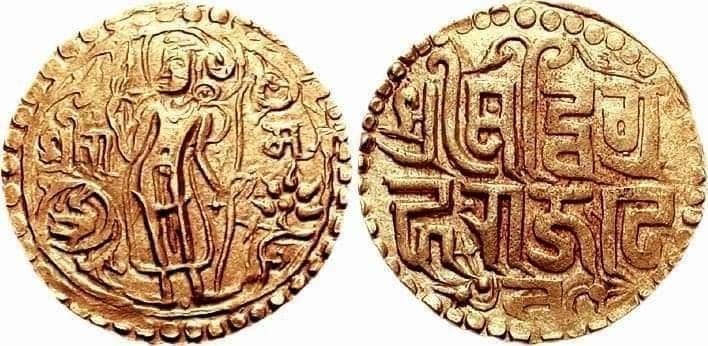
Abhijit Dandekar
The earliest concrete inscription of Rama on Indian coins can be traced back to the twelfth century. Subsequently, Ram Pratima was engraved on gold coins, known as 'Ramatanka,' during the Vijayanagara Empire. These coins were specifically minted for worship purposes and continue to be produced and revered in households to this day.
Hai Ram ke wujood Pe Hindostan ko naz, Ahle nazar samajhte hain usko imam-i-Hind! (India is proud of the existence of Ram. People consider him Imam-e-Hind)
Allama Iqbal's verses aptly portray Rama as an ideal man and an ideal brother, embodying various ideals such as that of an ideal king. Rama, often regarded as a symbol of numerous virtues, is revered for the significance of his sacrifices. Iqbal's assertion that the entire nation takes pride in Rama's personality is echoed by many thinkers and saints who have elucidated their points by citing Rama as an example. Undoubtedly, references to Maryada Purushottam, like Rama, have been an integral part of our cultural heritage since ancient times, making depictions of Gods and Goddesses incomplete without the earliest images of Rama.
The oldest depictions of gods and goddesses are discovered on the ancient coins of India known as 'Ahat' coins, circulated between the 6th century BC and the 2nd–1st century BC. Notably, it is worth mentioning that the engraved images on these coins do not feature representations of Rama.

Ramtanaka coins depicting Lord Ram
The earliest concrete depiction of Rama on Indian coins can be traced back to the twelfth century during the reign of King Vigraharaja IV (1153-1163 AD), who governed the Ajmer and Sambhar provinces in Rajasthan. The archer Rama's image was inscribed on his gold coins, with the letters 'Srira' and 'M' in Devanagari script on one side, while the other side featured the king's name written as 'Shrimadvigrahrajdev' in Devanagari script.
Surprisingly, beyond this singular instance, the depiction of Rama on the coins of other contemporary or subsequent kings is notably absent. However, approximately one and a half centuries later, an essential reference emerges in the book 'Dravyapariksha,' composed in the Prakrit-Apabhramsha language in 1318 AD by Thakkur Pheru, a scholar and officer at the Delhi Mint during that era. Thakkur Pheru provides comprehensive information in this treatise regarding currencies, their weights, and the purity of metals.
Introducing the measure 'Vana' for weighing gold, he identifies twelve varieties of pure gold. Notably, within the same text, Thakkur Pheru mentions the existence of gold coins of the 'Sitarami' type, categorized into 'Sanyoga' and 'Viyoga.' The names suggest that these coins bore engravings of Sita and Rama. Additionally, Thakkur Pheru advises that coins of approximately 83.3% purity, weighing ten 'mash' (a weighted quantity akin to our 'tola-masa'), should be reserved for religious worship rather than circulation as currency.
Currently, concrete evidence of these coins has not been unearthed in North India. However, scholars suggest that the mention likely pertains to Deccan coins, as similar coins have been discovered in that region. Some scholars propose that these coins may be associated with the Kakatiyas, who ruled Andhra Pradesh, and the Hoysalas, a contemporary dynasty in Karnataka. Characterized by a round and deep shape, these coins depict Rama in two variations. In the first version, Rama and Sita are seated in the Pushpak Vimana, while the second type portrays Ram-Sita on a throne with a servant standing there, holding an umbrella. Near to throne, an image of Hanuman is depicted bending down and touching Rama's feet. The other side of the coin features Hanuman with folded hands. These coin types persisted even during the later Vijayanagara Empire, all collectively referred to as 'Ramatanka.'

Gold coin of Vigraharaja IV depicting Lord Ram
In the northern regions, the usage of 'Ramatanka' type coins, while not intended for circulation, became prominent much later. Temples or merchants likely minted these coins for devotees, featuring 'Ram Darbar' on one side—depicting Rama-Sita seated on a throne with Lakshmana and Hanuman, along with scenes of Bharata and Shatrughna. The other side displays Rama and Lakshmana, accompanied by the inscription 'Ram Lachman Janak Jav(y)at Hanamanak.' Some Ramtankas bear the years 1700 or 1740, which some scholars equate to Vikram Samvat, while others argue it may be an arbitrary number unrelated to chronology, positing the emergence of such Ramatanka around 1792 AD or later. Regardless, these Ramatanka coins were exclusively intended for worship and continue to be crafted and revered in households, maintaining their significance in contemporary practices.
Mughal Emperor Akbar, recognizing the cultural significance of Rama and Sita, chose to inscribe their images on his gold and silver coins. In addition to establishing the 'Din-e-Ilahi' religion/sect, he introduced a new almanac for the sect, and notably, incorporated references to it on these coins. During the 50th year of his reign, Akbar featured the images of Ram and Sita on Elahi-type coins, inscribing 'Rama-Siya' above them in Devanagari script and including Persian month names like 'Farvardin' and 'Amardad.'
ALSO READ: How scientists established the existence of Ram Setu
This inclusive gesture, stemming from Akbar's inclusive and tolerant approach, recognises the significance of figures like Rama and Sita in India's cultural and religious heritage. As custodians of this rich tradition, the responsibility falls on us to uphold and carry forward this spirit of tolerance, which forms a crucial part of our generous and noble history. Our ability to fulfill this responsibility will shape our future.
(Author is an Associate professor at Deccan College Post-Graduate and Research Institute, Pune)
